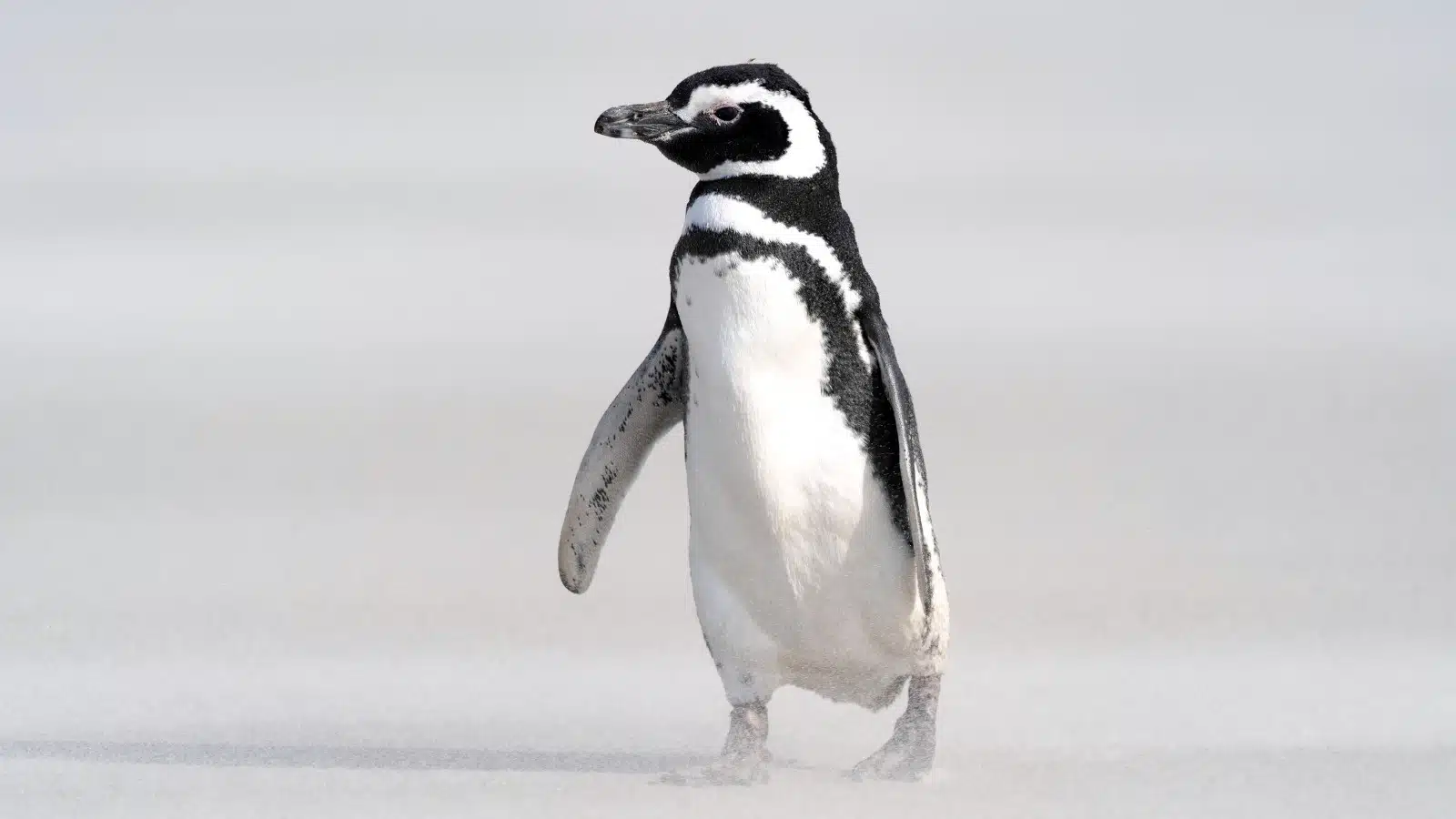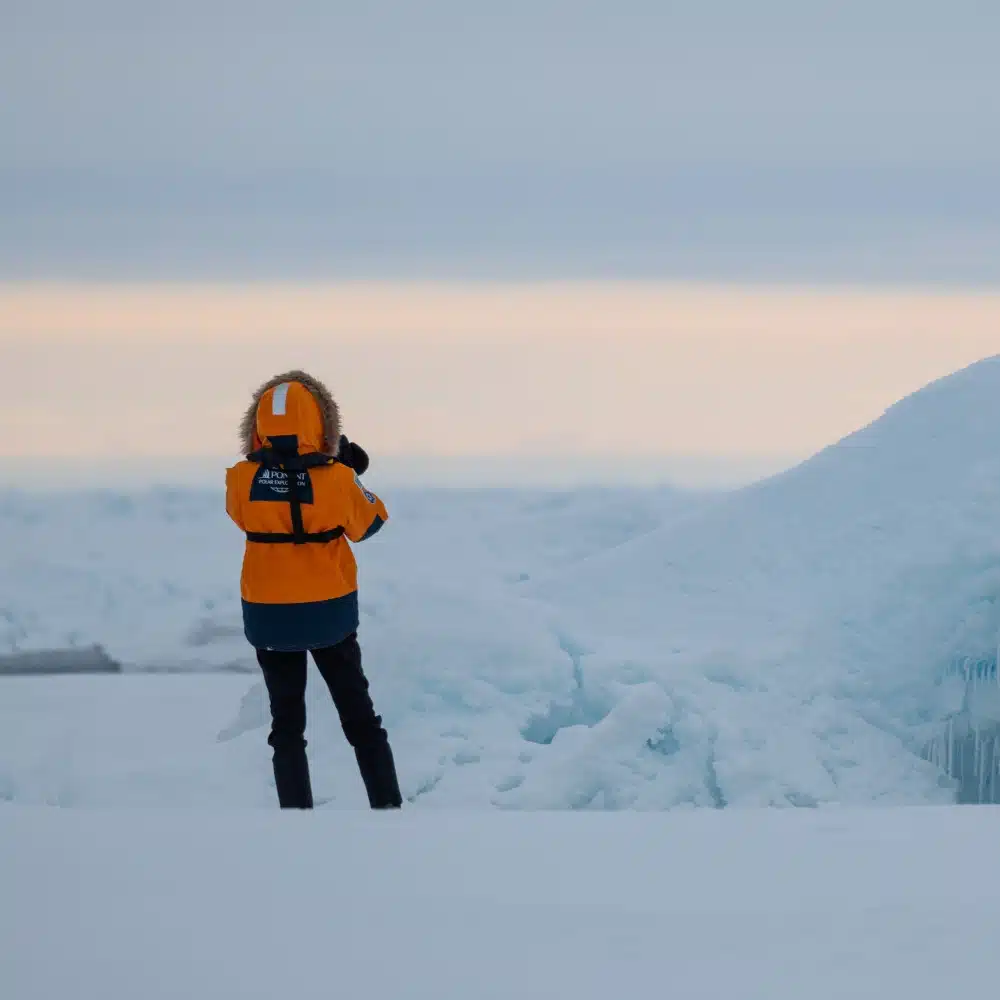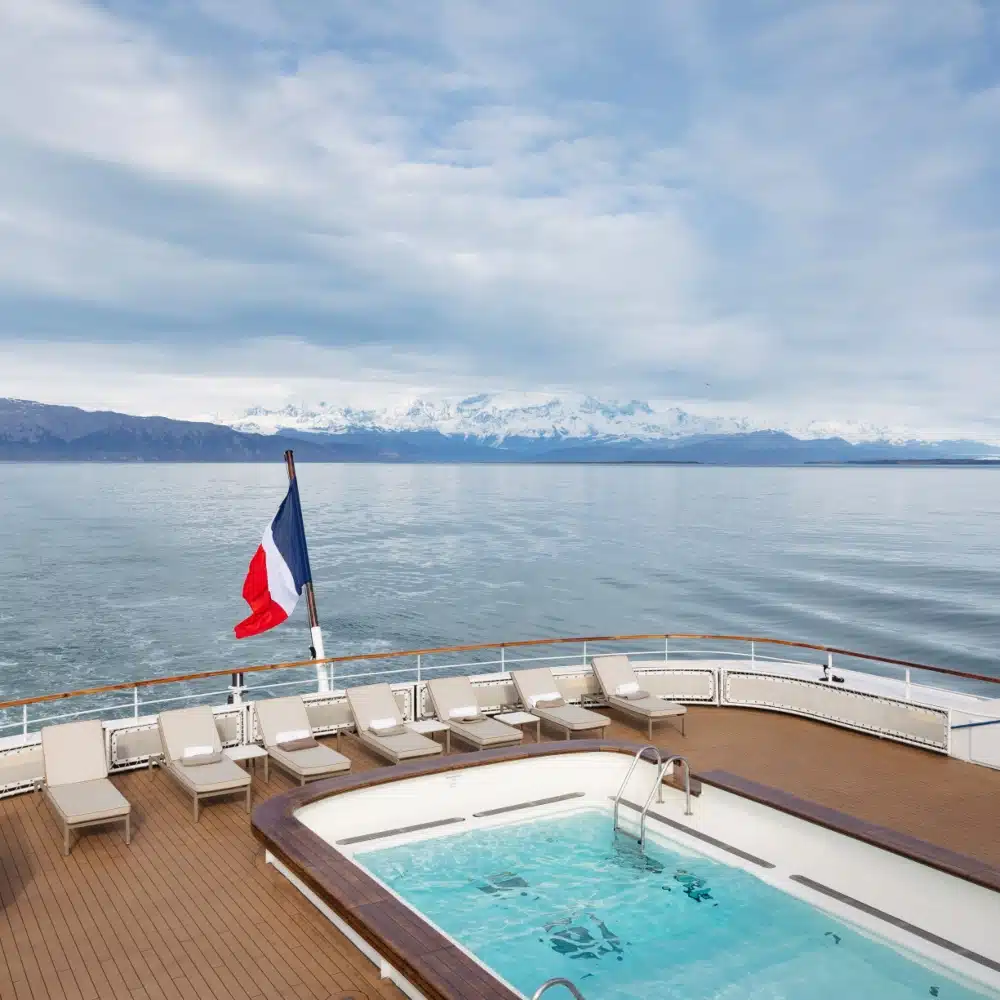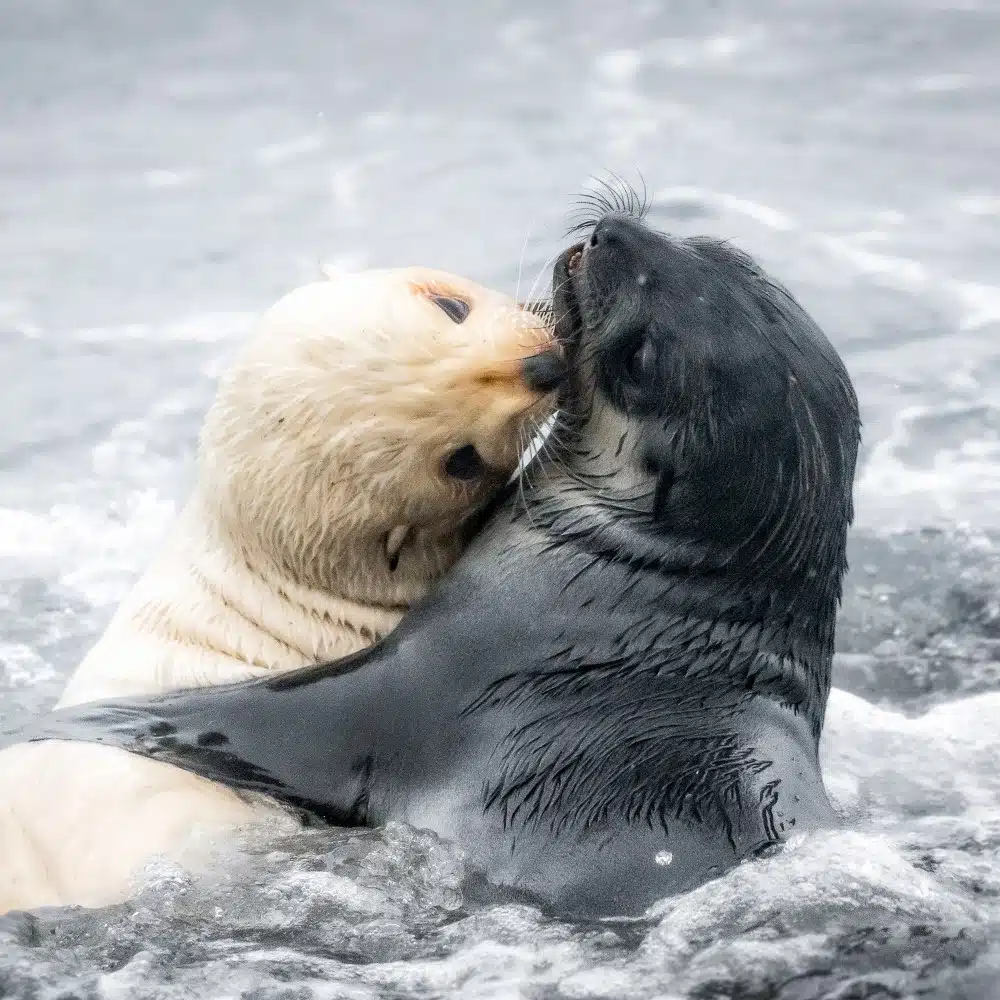It’s easy to think of the Antarctic Peninsula as austere or even barren. But nothing could be farther from the truth. PONANT is collaborating with Smithsonian Journeys during an illuminating expedition that traces the peninsula’s northern coast, revealing the continent’s varied icy contours and magnificent wildlife. Read on for a preview of this once-in-a-lifetime journey on board our luxury ship, L’Austral.
To be sure, much of the Antarctic Peninsula’s beauty can be measured by its austerity. This white wilderness – with its stillness and tranquility – is one of the world’s most breathtaking places. Time stands still here, measured only by the sun passing low on the horizon, the gray ocean waves tapping at massive walls of ice, the call of the emperor penguin or wail of the elephant seal in the distance.
It has been called hauntingly beautiful for its starkness. But when you look closely – as PONANT and Smithsonian Journeys will help you do – a thriving world emerges, marked by a dizzying profusion of wildlife and bird life, and a fascinating geology and geography that runs deep below the icy surfaces.
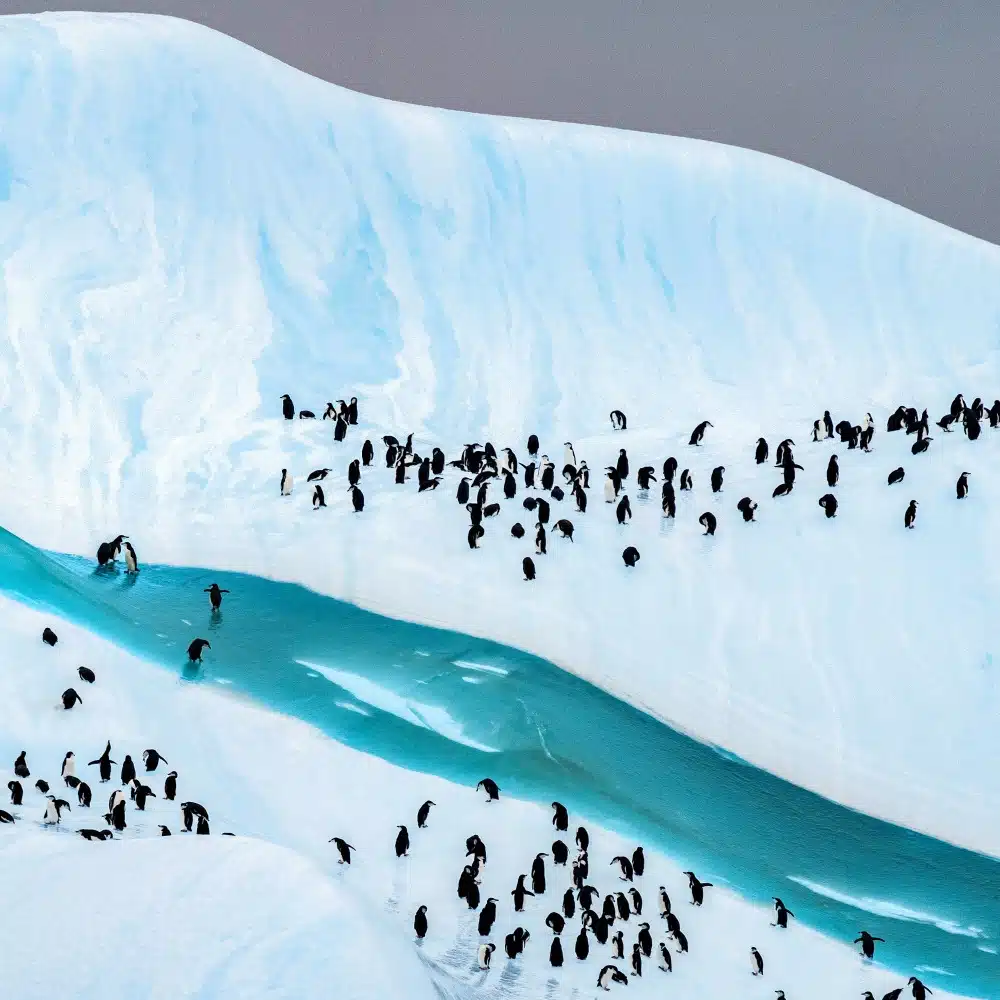
A Menagerie on Ice, in the Sea, and in the Air
Like in other parts of the world, wildlife along the peninsula is drawn to the water as a food source. But unlike in other parts of the world, there’s not much prey to be found farther inland. And so, all manner of marine creatures gather at land’s edge to hunt for nutrients for themselves and for their young.
From rocky, lichen- and moss-covered shores to the raft-like ice floes that drift with the currents, a surprising array of species call this icy realm home. You are most likely to spot several species of seal: leopard seals, a top-tier predator; Weddell seals, which congregate on “fast ice,” or ice sheets that are fastened to the coastline; elephant seals, second only to the whale as the largest marine mammal; and crabeater seals, with their gorgeous white pelt.
You may also spot any number of penguin rookeries massing on the shores. Gentoo, chinstrap, and Adélie can number in the thousands. These waddling land birds – comical, enchanting, and remarkable all at once – are commonly found near the peninsula’s tip and on some nearby islands. Clumsy as they appear to be while on land, they are quick and agile hunters in the water, scooping up krill, fish, squid, and other sea life and swallowing it whole.
One of the greatest thrills of the Antarctic Peninsula is spotting the many whales that breach the water. Humpback, minke, and orcas frequent the Southern Ocean; some humpbacks have migrated up to 5,000 miles to get here for the rich foraging opportunities. The minkes number in the hundreds of thousands worldwide. Because of its smaller size, it was largely ignored by the whaling industry. As for the orca, these apex predators enjoy a spot at the top of their food chain. These highly social pack hunters are actually a species of dolphin and have earned their nickname “killer whale” not only for the many species on which they feed, but also for their intelligent, vocal hunting techniques.
The skies above the Antarctic Peninsula are alive with the calls and flights of numerous bird species. Albatross, with their impressive wingspans and ability to fly thousands of miles at once, gracefully soar over the Southern Ocean. Petrels – including the snow petrel, which has also been spotted at the geographic South Pole – and the distinctively brown-feathered skuas dart through the air, seeking their next meal in the waters below. The Antarctic petrel, in particular, is a true marvel, with its sleek black and white plumage contrasting against an icy canvas.

Stunning Landscapes That Reveal the Past … and the Future
Beneath the pristine ice and snow of the Antarctic Peninsula lies a geological tapestry that tells the story of Earth’s tumultuous geologic history. Some believe that the northern reaches of the peninsula were once linked to the Andes Mountains. Today, the peninsula is predominantly composed of a mix of sedimentary and igneous rocks and deposits from andesite lava and granite from magma. This all gives geologists ample clues about the processes that shaped the continent over millions of years.
Remarkably, the Antarctic Peninsula is a geologically active region. Volcanic activity still contributes to its dynamic landscape. Off the coast of the peninsula, the rim-shaped Deception Island is an active volcano whose crater lies under the ocean’s surface.
The presence of fjords and rugged mountain ranges brings further complexity and intrigue to the geology of the region. Glacial processes, driven by the immense weight of the Antarctic Ice Sheet, have carved deep valleys and fjords into the landscape.
The geography of the Antarctic Peninsula is a study in extremes. Stretching northwards from the continent, the peninsula features a mix of mountainous terrain, ice-covered plateaus, and coastal plains. Jagged mountain ranges, such as the Antarctic Peninsula Mountains, create a dramatic backdrop against the icy expanses.
Notably, the Antarctic Peninsula is one of the fastest-warming regions on the planet, having seen significant temperature increases over the past century. This warming has led to the retreat of glaciers and the disintegration of ice shelves, profoundly impacting the geography and coastline of the region. This evolving landscape serves as a poignant reminder of the global implications of climate change.
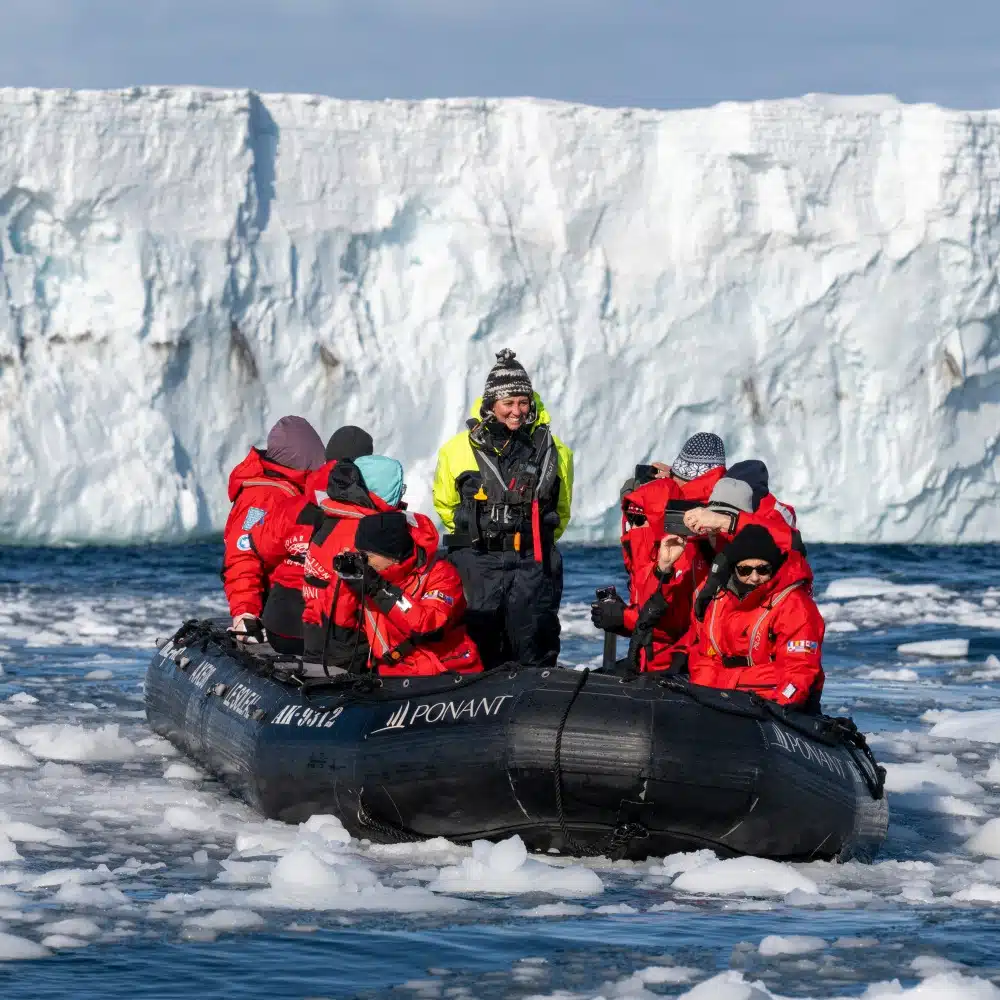
An Icy Wonderland
Perhaps more mesmerizing than the seals, penguins, birds, and ever-changing landscape is the ice. Spellbinding, glittering, and somehow elegant, ice defines the Antarctic Peninsula. Glaciers flow toward the sea, calving off into icebergs that drift in the Southern Ocean. Iceberg shapes and sizes are as diverse as they are captivating, ranging from towering behemoths to intricate sculptures carved by wind and waves.
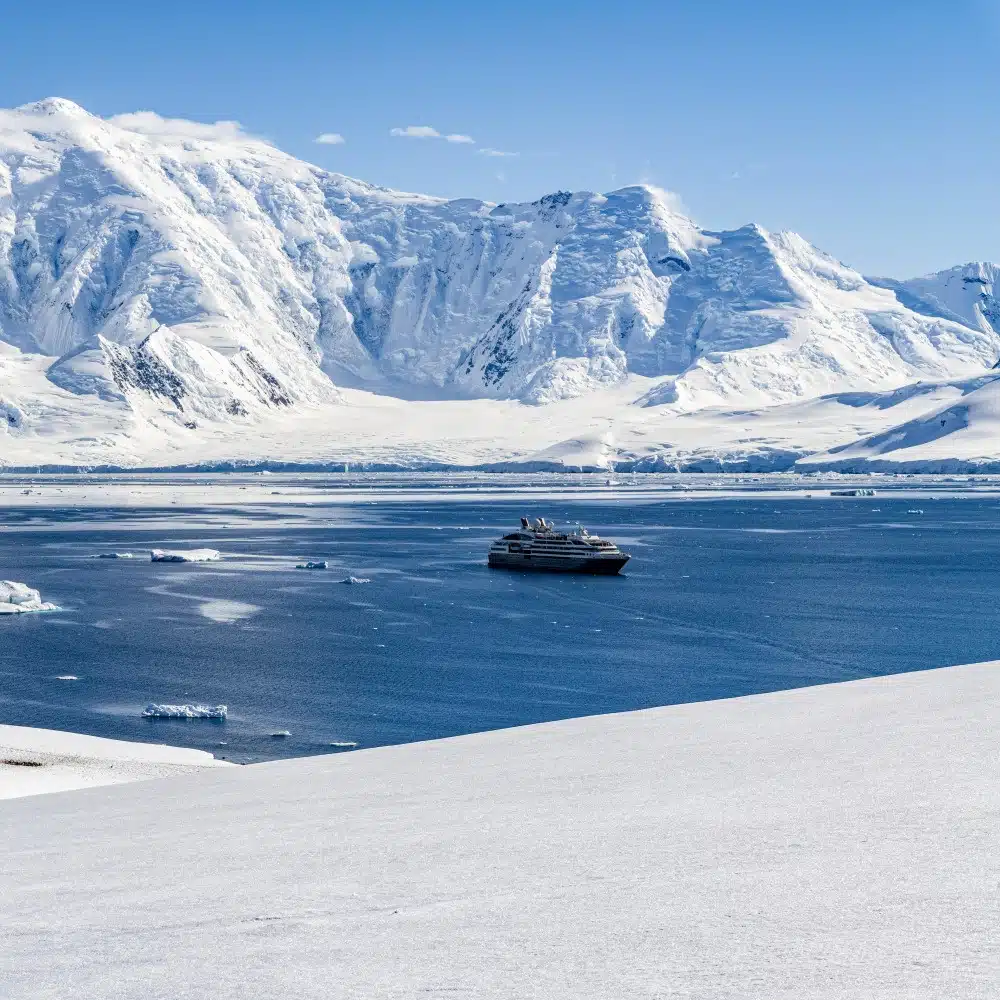
But icebergs are dwarfed by ice shelves. These colossal expanses of floating ice, while still attached to the mainland, extend from the coastline into the surrounding waters. They can be as thick as 3,300 feet and as large as 188,000 square miles – larger than the U.S. state of California. They play a crucial role in regulating the flow of ice from the continent into the ocean, influencing sea levels and global climate patterns.
